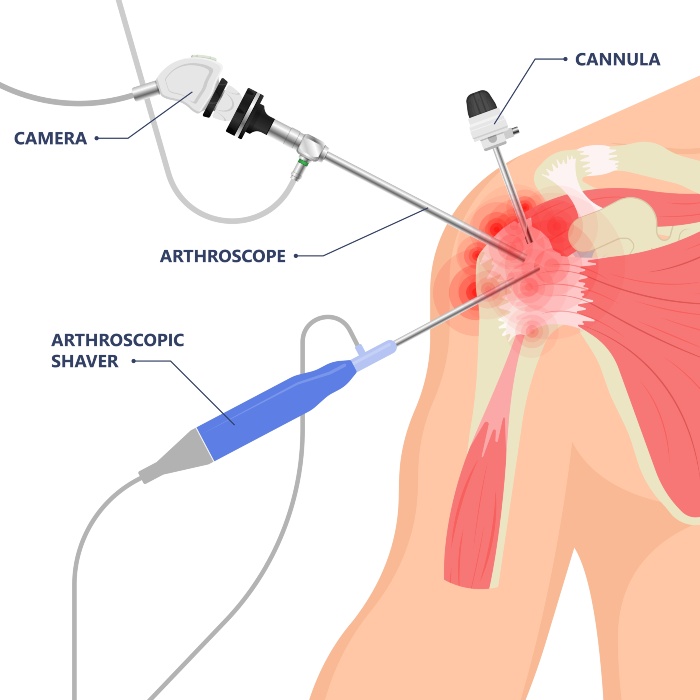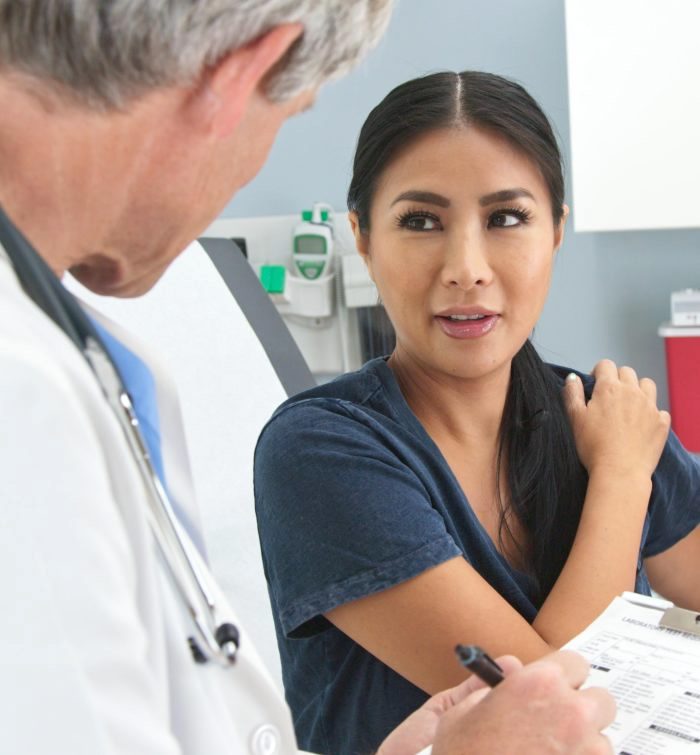SHOULDER ARTHROSCOPY MELBOURNE
SHOULDER ANATOMY
What are the joints, muscles and ligaments in your shoulder?
The shoulder is made up of three bones:
(1) The Scapula (shoulder blade), (2) Clavicle (collarbone) and; (3) Humerus (upper arm bone)
The shoulder joint is formed where the humerus (upper arm bone) fits into the scapula (shoulder blade), like a ball and socket.
Other important shoulder bones include:
The acromion – The bony projection off the scapula.
The clavicle (collarbone) – This meets the acromion in the acromioclavicular joint.
The coracoid process – The hook-like bony projection from the scapula.
The shoulder has several other important structures including:
The rotator cuff – A collection of muscles and tendons that surround the shoulder, giving it support and allowing a wide range of motion.
The bursa – A small sac of fluid that cushions and protects the tendons of the rotator cuff.
The labrum – A cuff of cartilage that forms a lip for the ball-like head of the humerus to fit into the socket.
The humerus fits relatively loosely into the shoulder joint, allowing the shoulder a wide range of motion.
Shoulder Anatomy

Figure 1
SHOULDER ARTHROSCOPY
A shoulder arthroscopy is a procedure that orthopaedic surgeons use to inspect, diagnose, and treat problems inside the shoulder joint.
An anaesthetic will be needed for your surgery. The anaesthetist will discuss this with you prior to your arthroscopy.
During a shoulder arthroscopy, Dr Pullen inserts a small camera, called an arthroscope, into your shoulder joint.
The camera displays the pictures of the shoulder joint on a video monitor where Dr Pullen can assess and in some cases treat shoulder problems.
The arthroscope and surgical instruments are small, with the incisions commonly 2-3cm in size.
The small incisions result in less pain for patients and shortens the time it takes to recover from the operation.
Shoulder arthroscopy has been performed for over 40 years, is very safe and has made recovery from shoulder surgery faster.

POTENTIAL COMPLICATIONS
The surgery complications which may occur after a shoulder arthroscopy may include:
- Shoulder pain
- Shoulder swelling
- Shoulder stiffness and restricted movement
- Infection
- Numbness or tingling around the shoulder.
Dr Pullen will discuss with you in detail the potential complications and risks in relation to the surgery.
Proud member of Royal Australasian College of Surgeons and Australian Orthopaedic Association.


Shoulder Arthroscopy Melbourne
Dr Pullen treats patients from all over Victoria in relation to shoulder injuries. He consults with patients at the following practice locations in Melbourne including East Melbourne and Ringwood.


